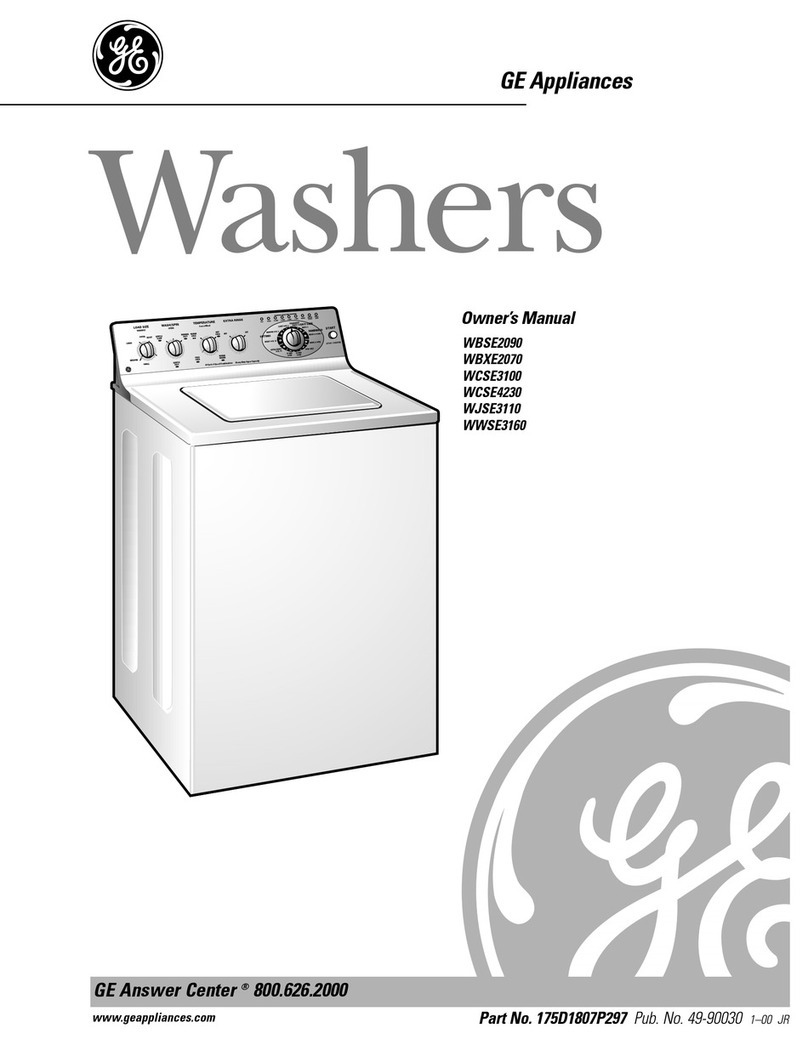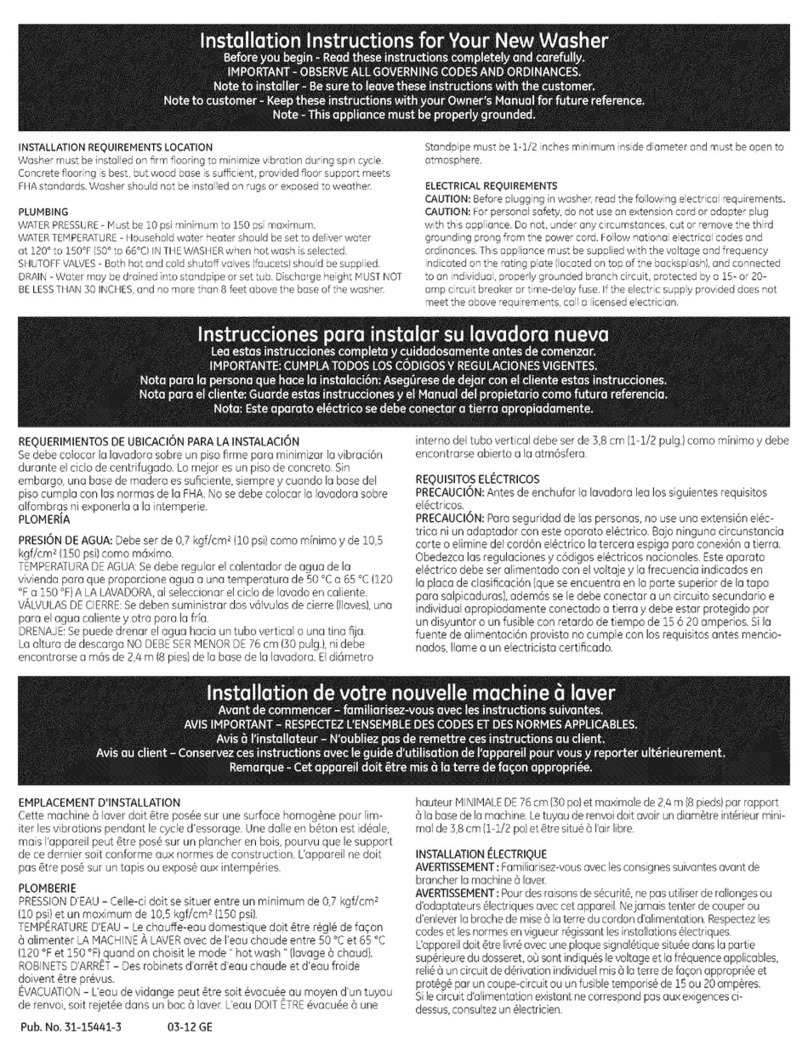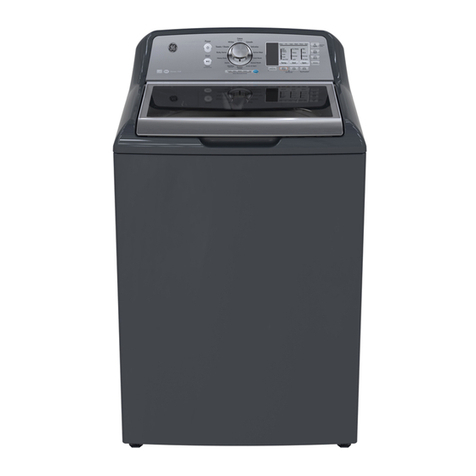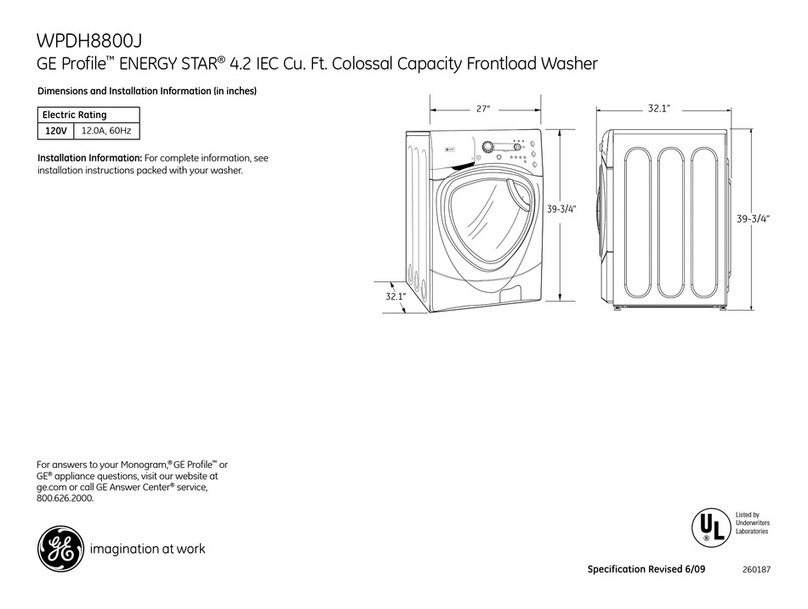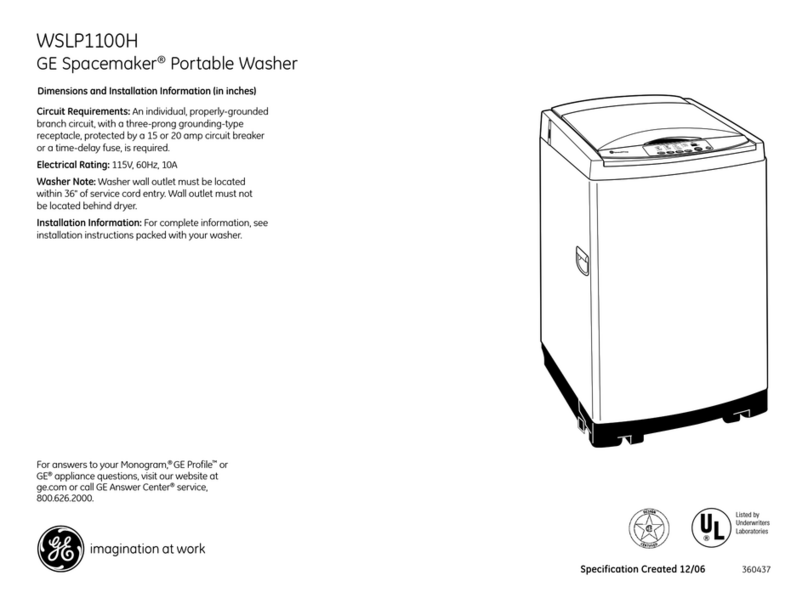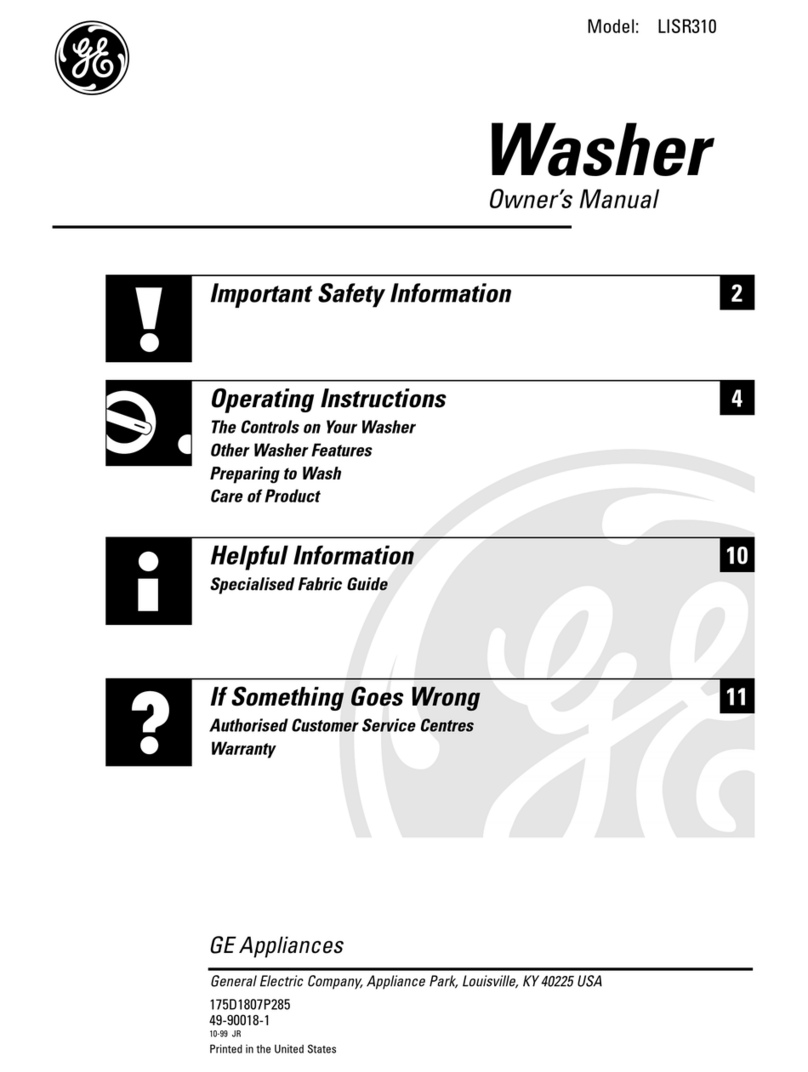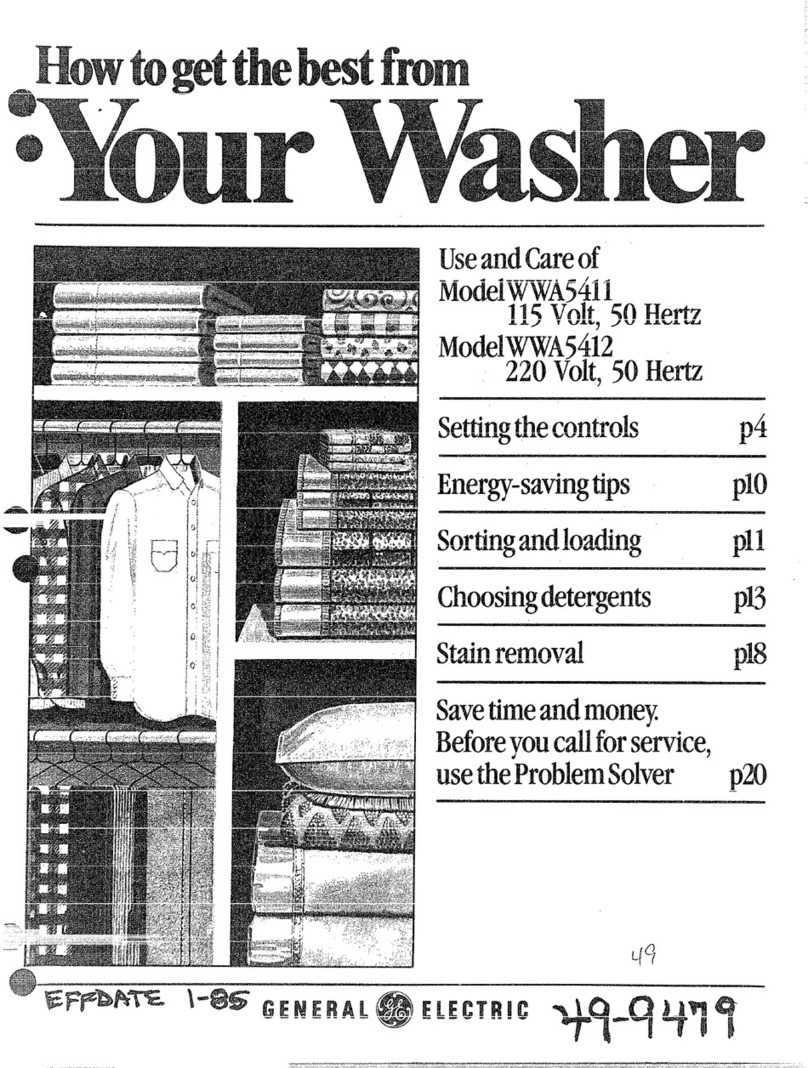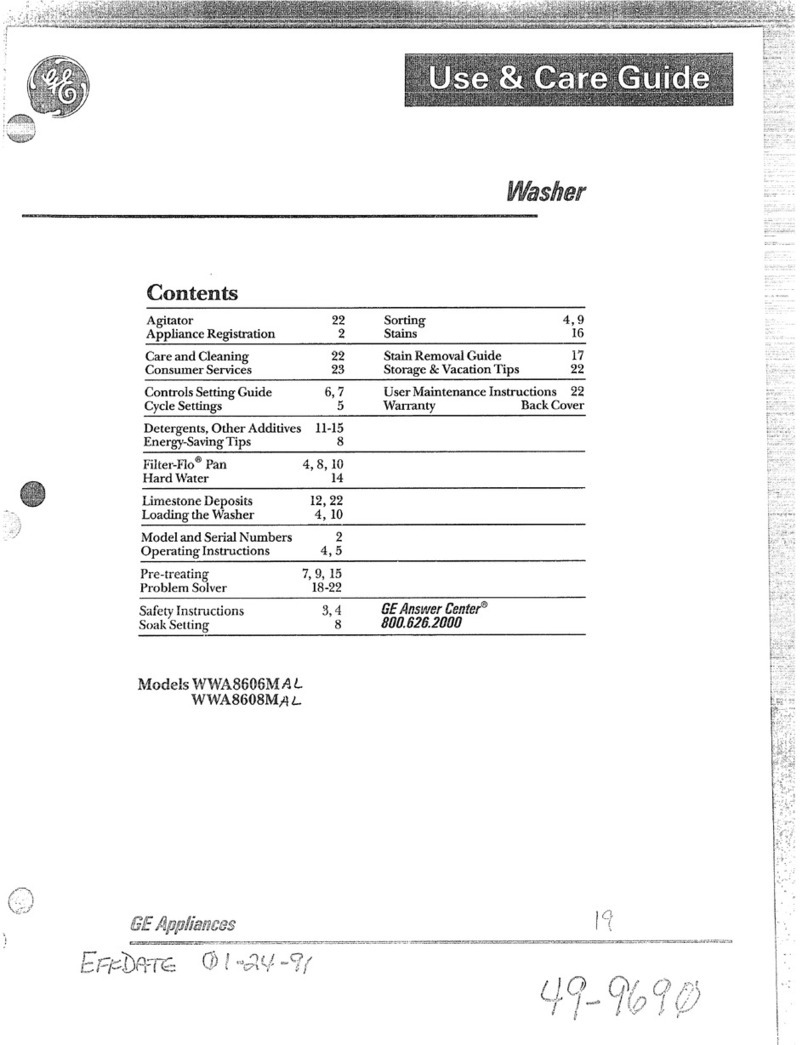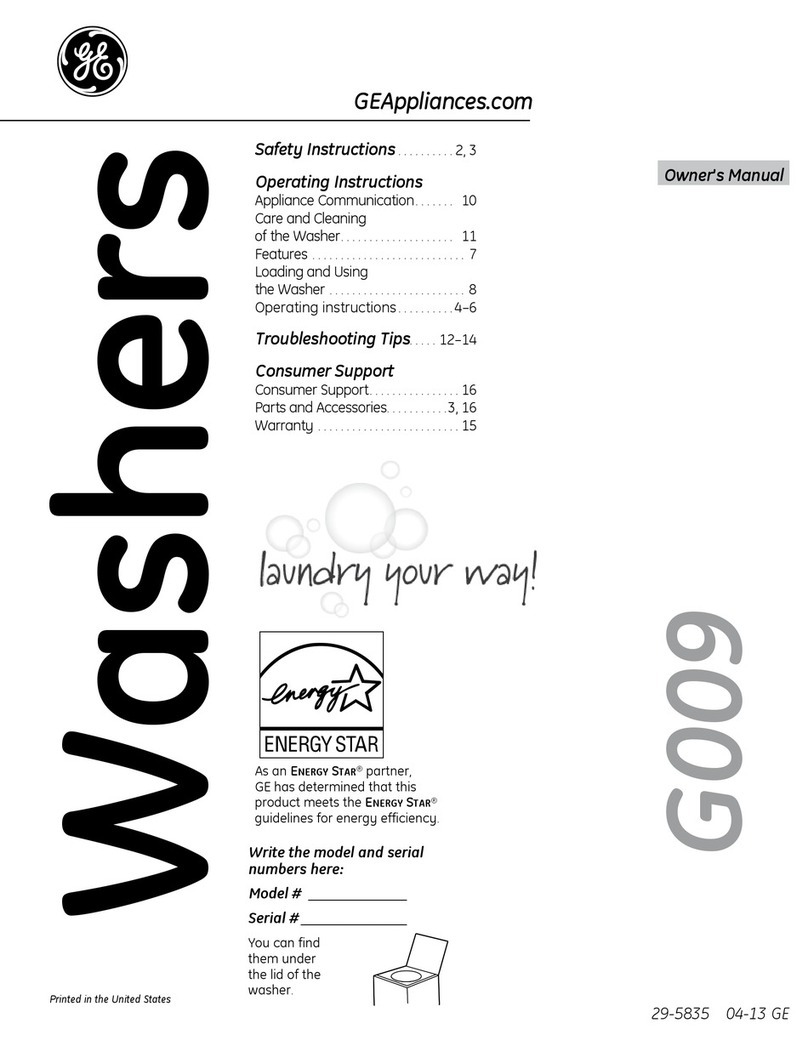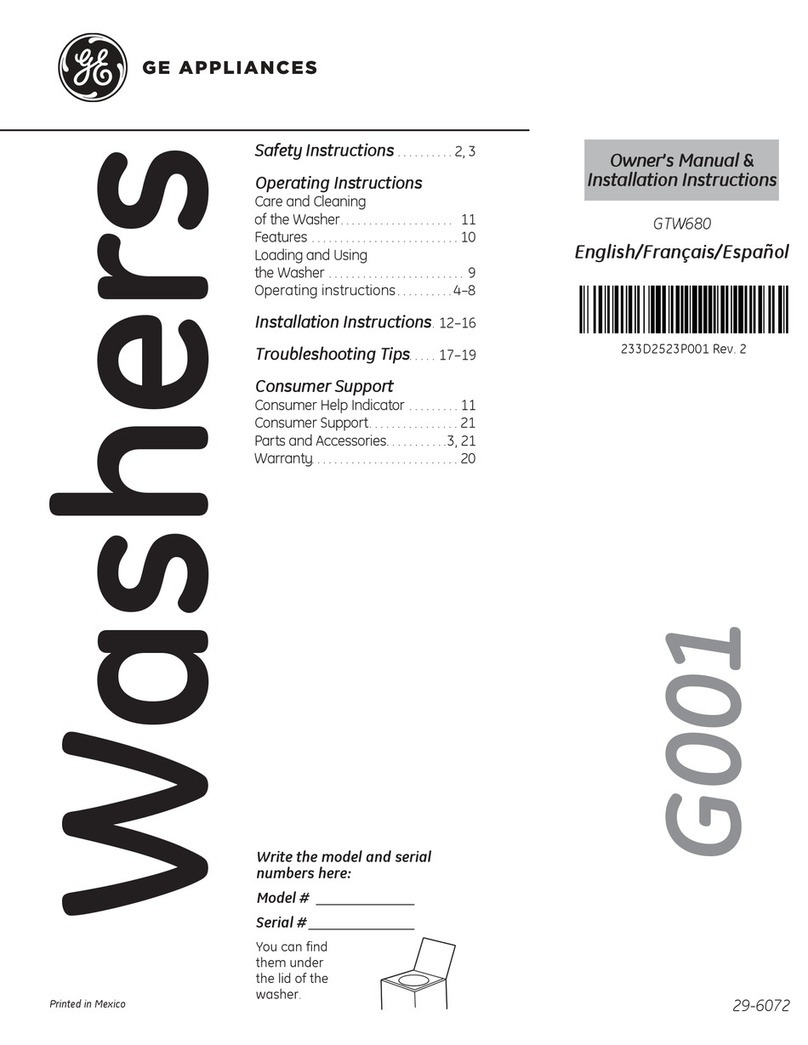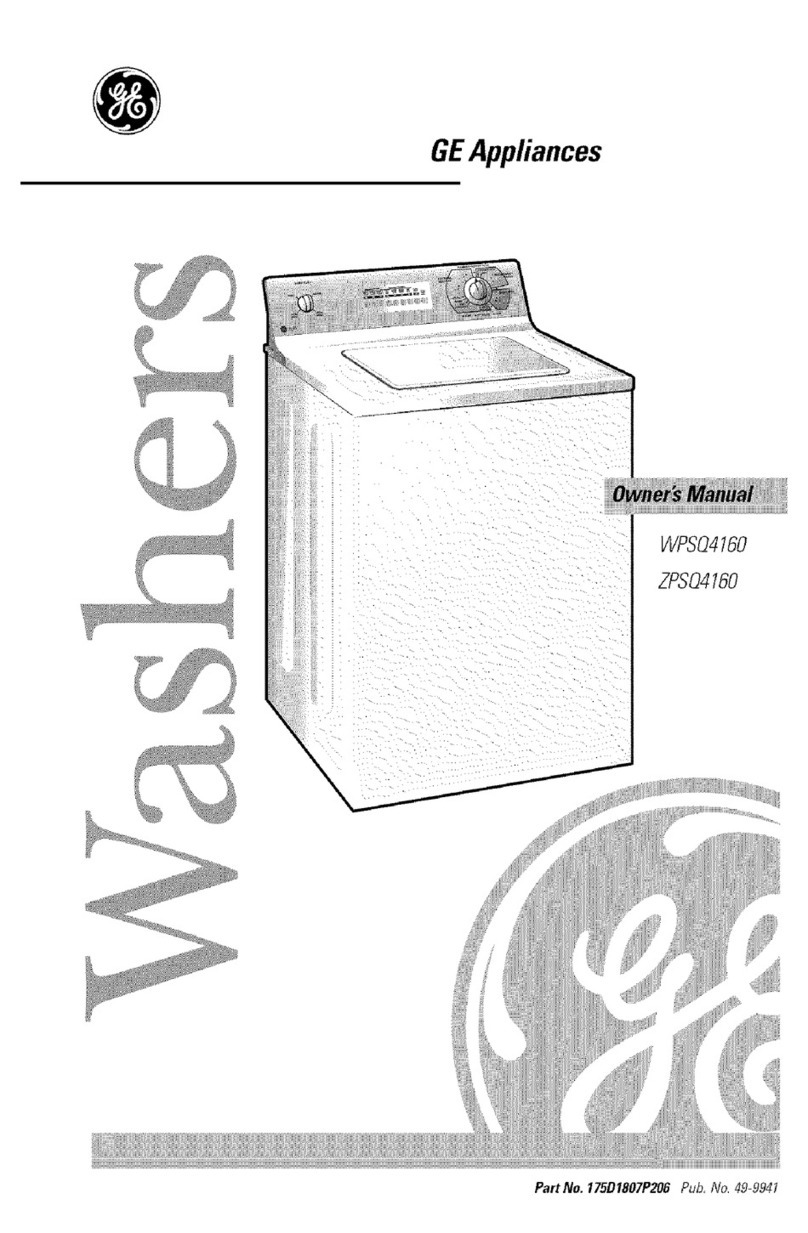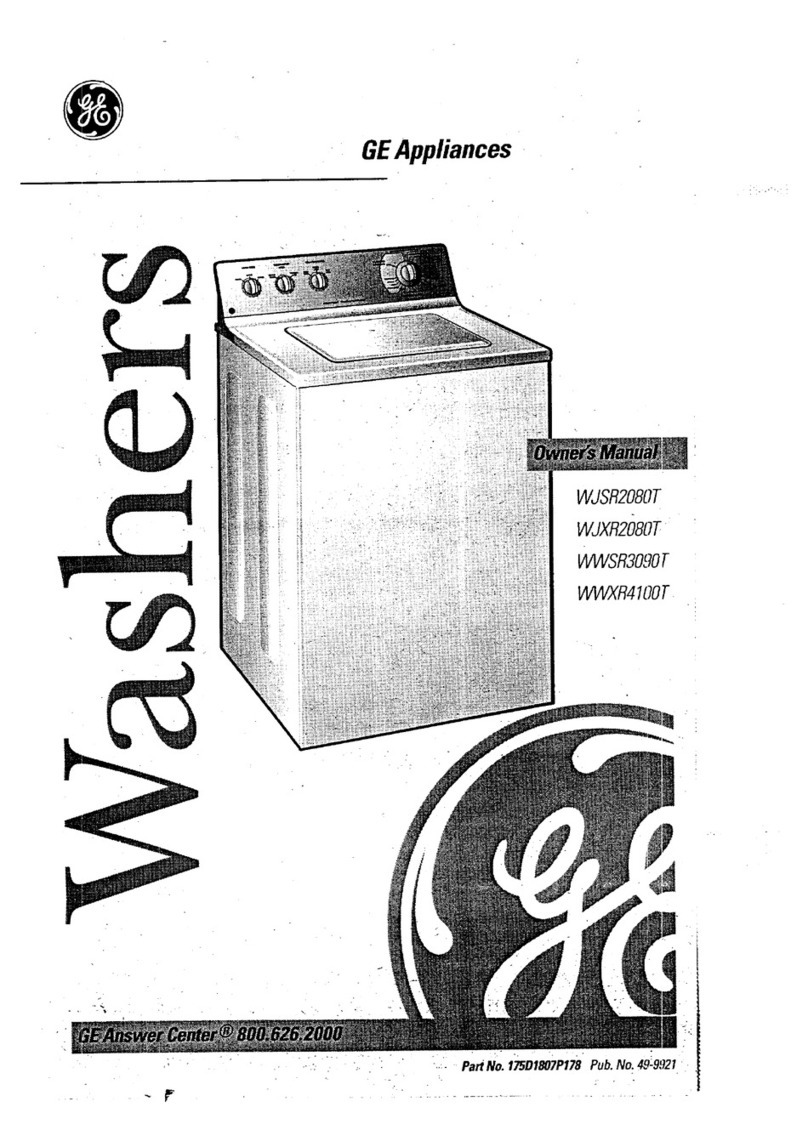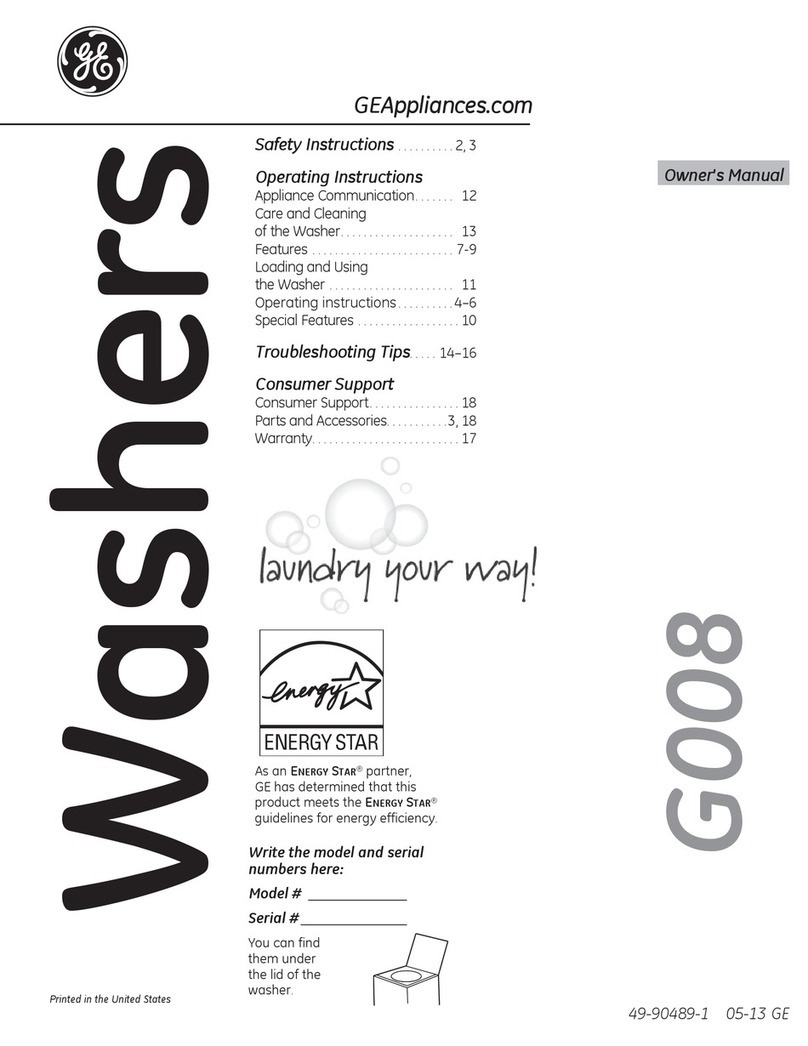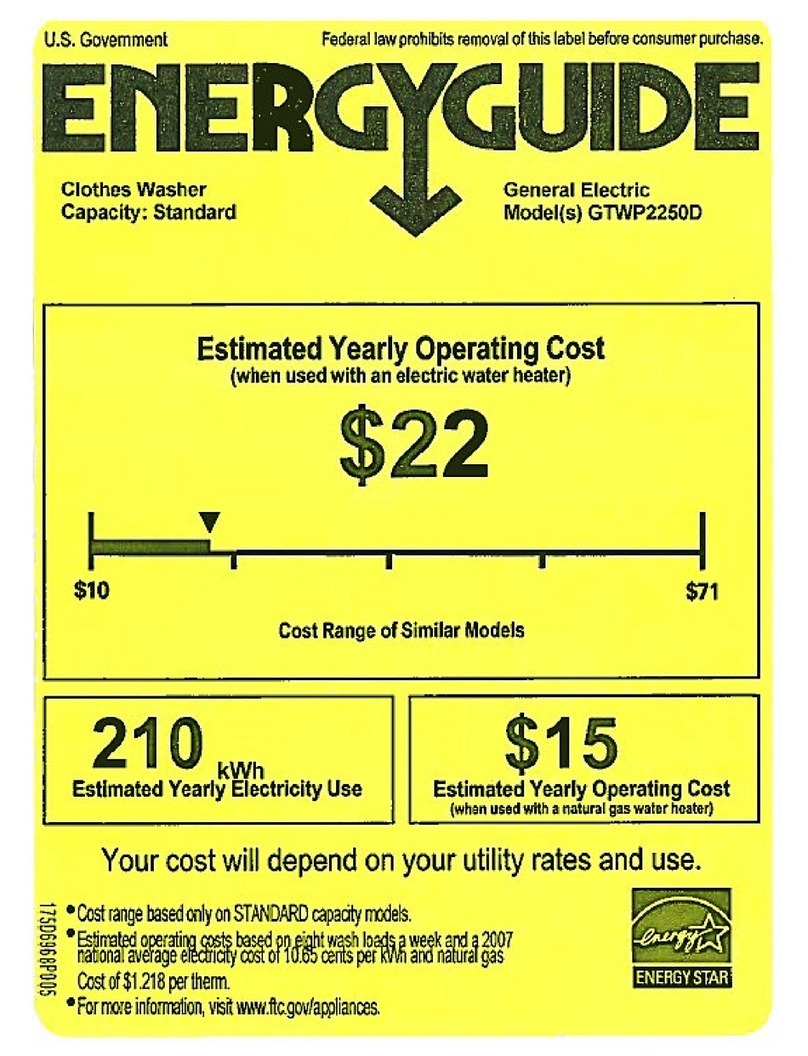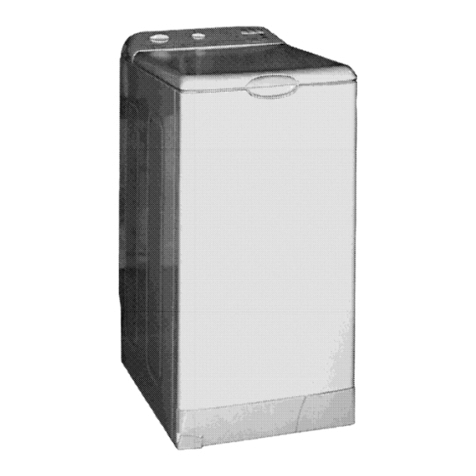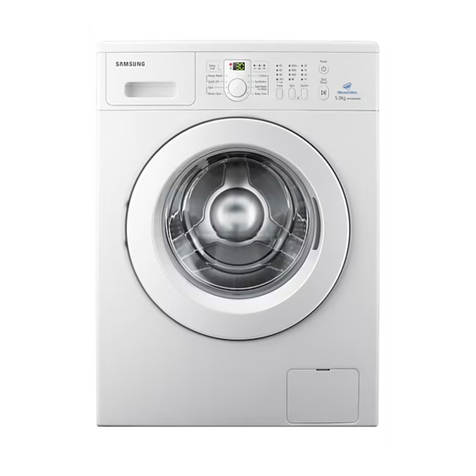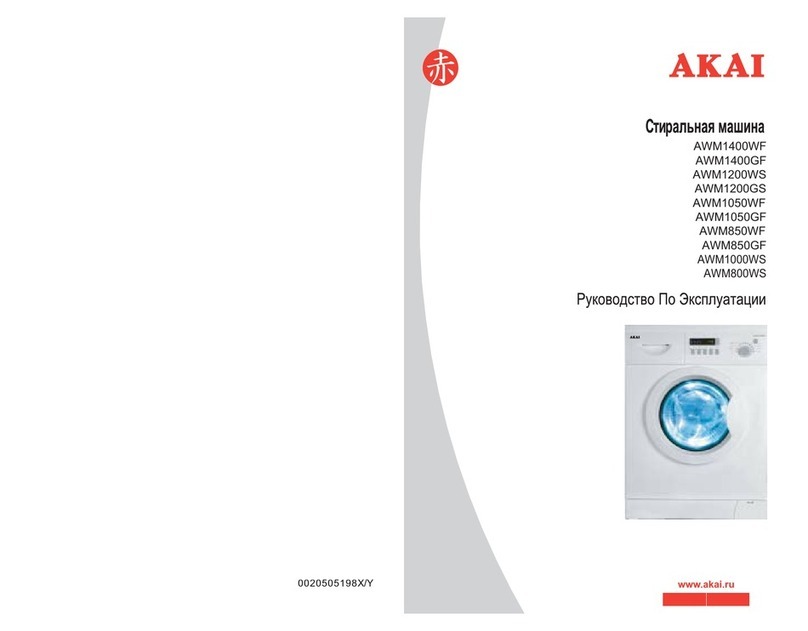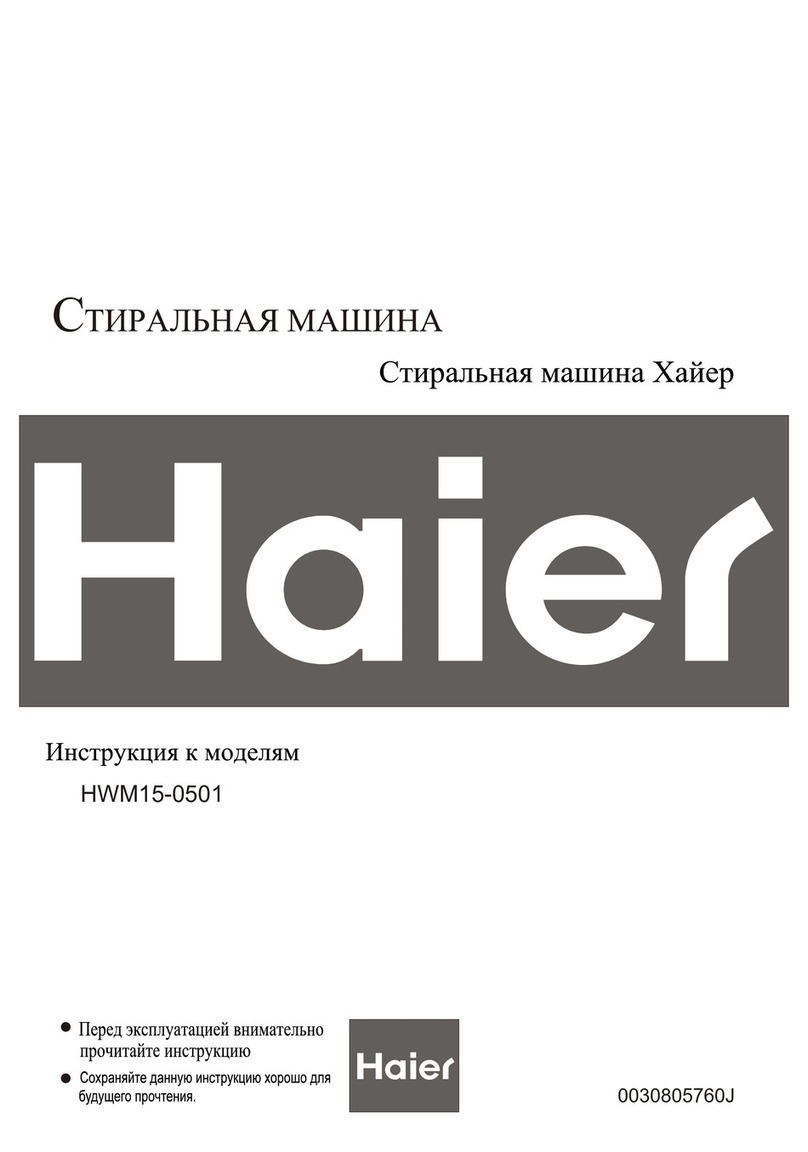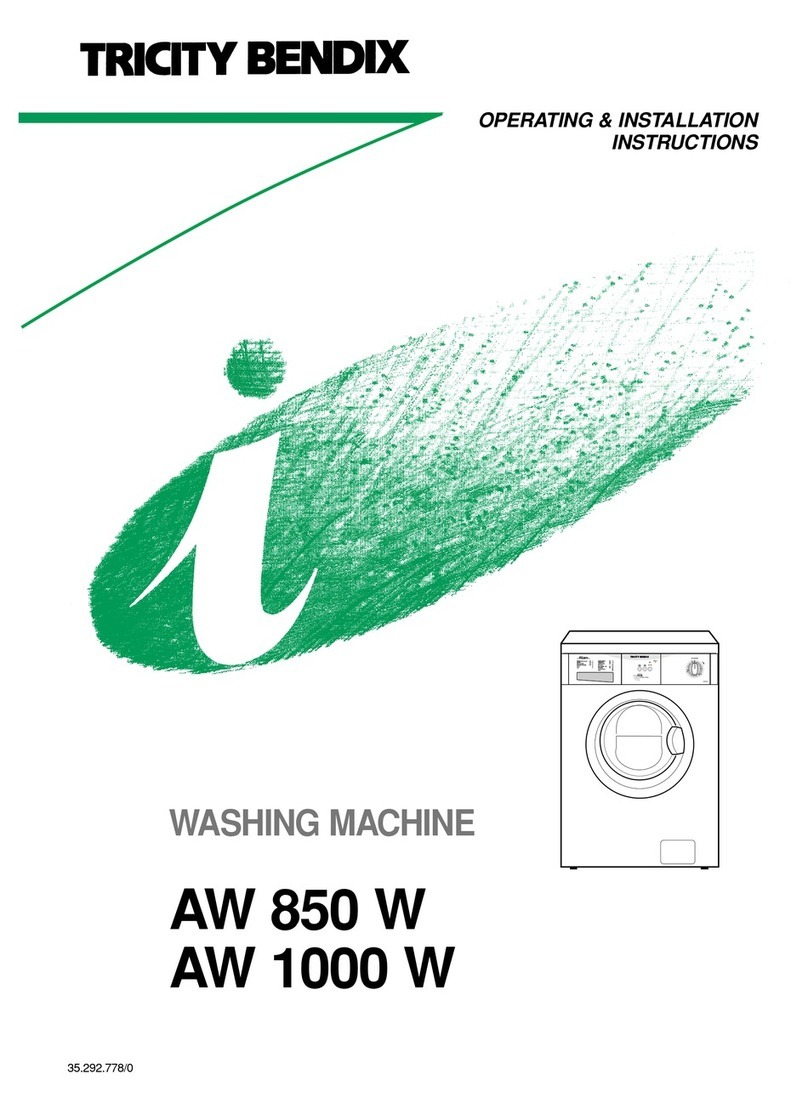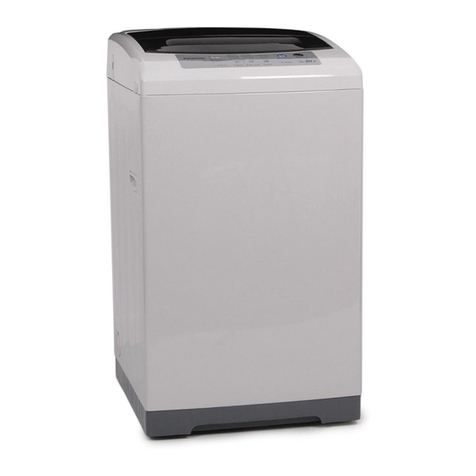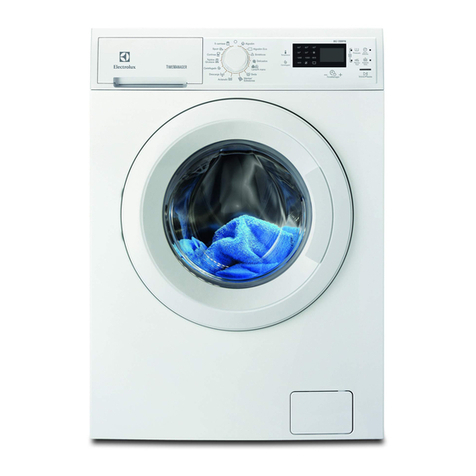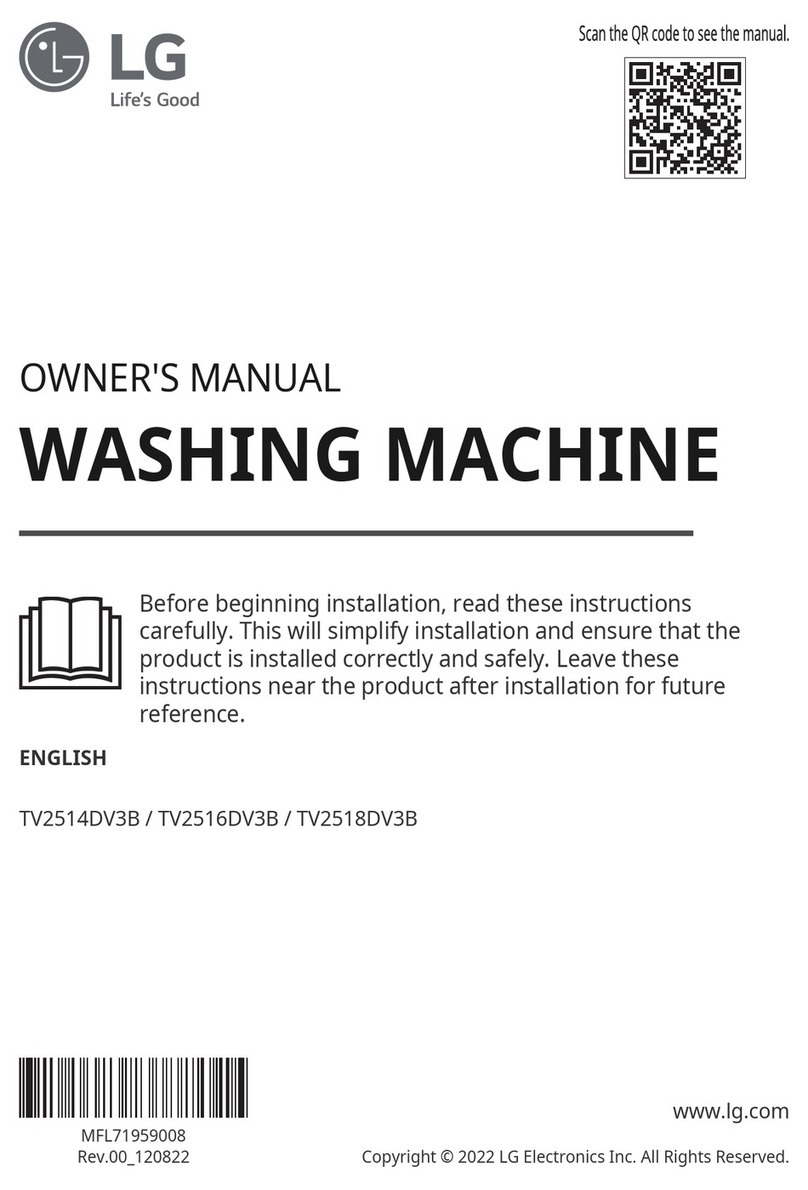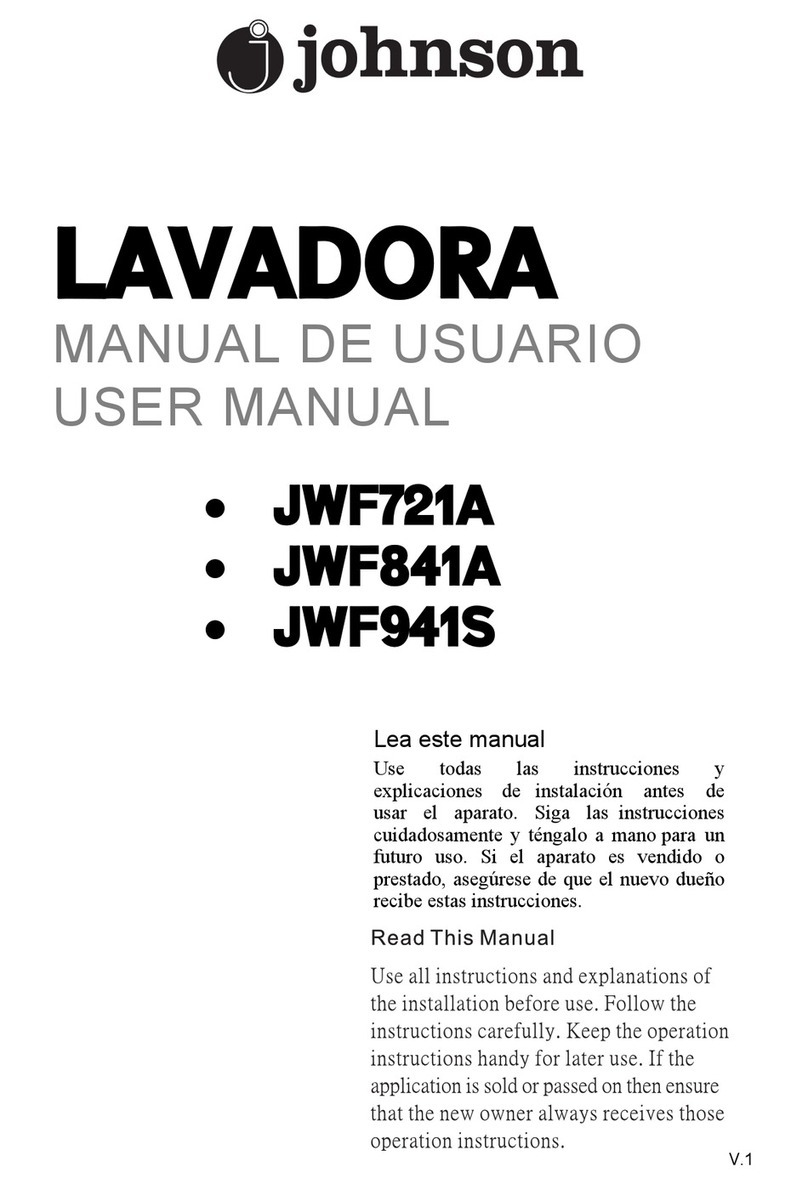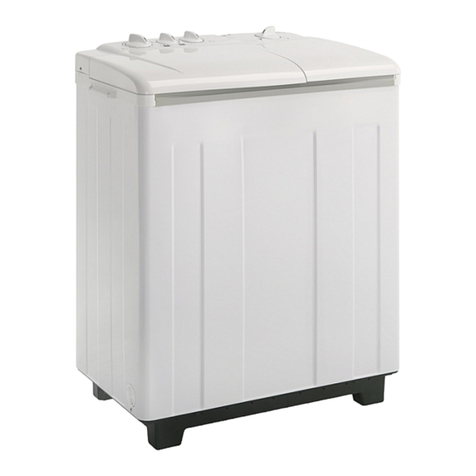
49-3000301 Rev 1 7
USING THE WASHER
Getting started
EStart/Pause ( )
Add detergent to the bottom of the basket prior to loading clothes.
Loosely load items in the washer basket. Overloading may negatively impact wash performance.
Press Start/Pause ( ) to begin the cycle. NOTE: When the lid is closed, it will lock only during the load sensing portion
of the cycle and during spin portions of the cycle. It will unlock after load sensing and spin.
Pressing Start/Pause ( ) will unlock the lid (if locked at that time), pause the cycle and the PAUSE indicator light will
blink. To continue the cycle, press Start/Pause ( ) again.
NOTE: The machine will cancel/end the session and drain when water is present and the lid is left open for an extended
duration, or if the unit is left in a paused state for 4 minutes with the lid closed. If the lid is opened or the unit is paused,
the app will notify the user of the time limits to restart the machine within the same session, and will also notify the user if
their session has timed out. If the session times out, scan the QR code to begin a new session, select the cycle, and press
Start/Pause ( ).
Automatic Load Sensing
This determines the correct agitate profile, agitate duration and amount of water suited to the size and type of load placed
in the washer. The washer will not start the wash cycle or fill with water if the lid is open. When the lid is closed the machine
is able to begin filling with water in order to sense the load size.
NOTE: Automatic Load Sensing initiates a spin at the beginning of the cycle and will take as much as 3 minutes to
complete (significantly shorter for smaller loads); this is normal operation.
NOTE: This is a high efficiency washing machine. This system requires less water while providing effective cleaning action.
You may notice that the water level is lower than on your previous washer. This is normal.
DWash Cycles - Cycle Pads
The wash cycle controls the type of washing process. The cycle options can be selected in any order by pressing
the pad for the desired cycle, Soil level then starting the cycle. Pressing Start/Pause ( ) pad locks the cycle
selection, processes the payment and begins the cycle. NOTE: Selecting another cycle, after already starting a
cycle, will NOT stop the washer or change the cycle/option to a new selection.
The chart below will help you match the items to be washed with the best wash cycle setting. For optimal
performance, select the cycle that most closely matches the items being washed.
Selections and options shown in bold are the recommended settings for that cycle.
Some cycles and options may not be available on some models.
Items to Wash Cycle Wash Temp Soil Level Cycle Details
Cycle for normal, regular,
or typical use for washing
up to a full load of normally
soiled cotton clothing
COLORS
NORMAL
Warm Heavy
Medium
Light
Cycle for normal, regular, or typical use for washing
up to a full load of normally soiled cotton clothing.
Choose soil level selection as appropriate for your
clothes load for a higher degree of cleaning and
optimal fabric care.
Whites and household
linens
WHITES Hot Heavy
Medium
Light
Cycle tailored to clean and brighten your whites.
Lingerie and special care
fabrics with light soil
DELICATES Warm Heavy
Medium
Light
Utilizes an extra gentle agitate profile and a low spin
speed to provide special care to delicate fabrics. It is
recommended to place small or ultra delicate items
in mesh bags before washing.
Water-resistant, bedding
and bulky items, such as
large coats, mattress pads
bath mats and towels
TOWELS/
BEDDING
Warm Heavy
Medium
Light
Provides a max fill wash water level to wash bulky
and waterproof items. Also incorporates a deep
fill rinse to effectively rinse bulky items and a low
spin speed appropriate for these items. Only
use this cycle for water-resistant, bedding or
bulky items.
Small loads of lightly soiled
items that are needed in
a hurry
SPEED
WASH
Cold Heavy
Medium
Light
Utilizes an expedited wash period and time saving
continuous spray rinse to clean small lightly soiled
loads in the fastest time possible.
Heavily soiled colorfast
items
DEEP
CLEAN
Warm Heavy
Medium
Light
The washer allows for an extended agitation time
to help remove stains from clothes during the
wash cycle and then a cold rinse.
The cycles COLORS NORMAL, WHITES and SPEED WASH are recommended for the efficient use of the washing machine.



